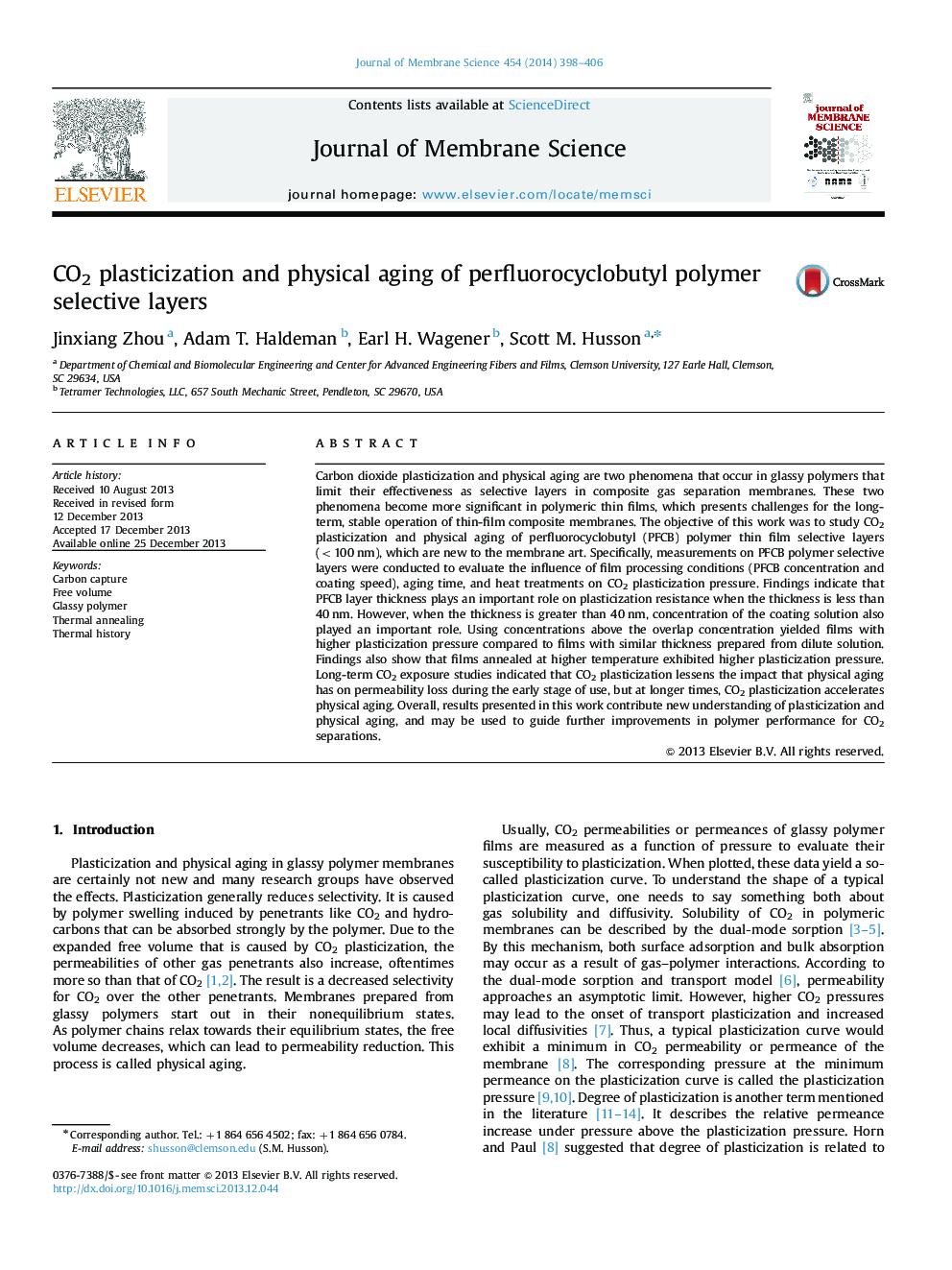| Article ID | Journal | Published Year | Pages | File Type |
|---|---|---|---|---|
| 633963 | Journal of Membrane Science | 2014 | 9 Pages |
•PFCB layer thickness impacts plasticization resistance for films thinner than 40 nm.•Films have higher plasticization pressure when cast above the overlap concentration.•Correlation found between plasticization pressure and tensile modulus/solubility.
Carbon dioxide plasticization and physical aging are two phenomena that occur in glassy polymers that limit their effectiveness as selective layers in composite gas separation membranes. These two phenomena become more significant in polymeric thin films, which presents challenges for the long-term, stable operation of thin-film composite membranes. The objective of this work was to study CO2 plasticization and physical aging of perfluorocyclobutyl (PFCB) polymer thin film selective layers (<100 nm), which are new to the membrane art. Specifically, measurements on PFCB polymer selective layers were conducted to evaluate the influence of film processing conditions (PFCB concentration and coating speed), aging time, and heat treatments on CO2 plasticization pressure. Findings indicate that PFCB layer thickness plays an important role on plasticization resistance when the thickness is less than 40 nm. However, when the thickness is greater than 40 nm, concentration of the coating solution also played an important role. Using concentrations above the overlap concentration yielded films with higher plasticization pressure compared to films with similar thickness prepared from dilute solution. Findings also show that films annealed at higher temperature exhibited higher plasticization pressure. Long-term CO2 exposure studies indicated that CO2 plasticization lessens the impact that physical aging has on permeability loss during the early stage of use, but at longer times, CO2 plasticization accelerates physical aging. Overall, results presented in this work contribute new understanding of plasticization and physical aging, and may be used to guide further improvements in polymer performance for CO2 separations.
